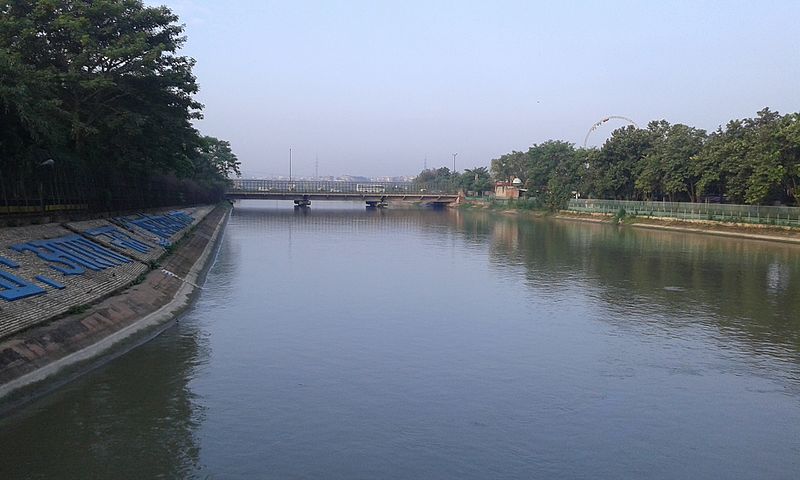Lockdown for Nagpur from 15th to 21st March, Maharashtra govt on alert
The Maharastra government has decided to impose a total lockdown in the area under Nagpur Police Commissionerate from 15th to 21st March. The decision was taken after Nagpur reported more than 1800 cases in 24 hours. The government has informed that essential services such as vegetable, fruit shops and milk booths will continue to operate.
Maharashtra has reported more than 13000 cases a day, the highest in the country and is still on top of the tally. This has pushed the government into alert mode. CM Uddhav Thackeray has said that lockdown might be imposed in other parts of the state as well in the light of rapidly rising COVID cases over the last one month.
Read more: Get vaccinated, do not lower guard: What doctors are telling us
The Health Department of Maharashtra has come up with a seven-point action plan for testing of close contacts, fast contact-tracing, mass testing in hot-spots and audit of deaths. All district administrations have been asked to follow the action plan.
India recorded 22,854 fresh COVID cases in the last 24 hours which is the highest in two months, taking the total cases to 1,12,85,561.
Source: NDTV
More than 20 million get vaccinated in India
Under the world’s largest vaccination drive that started on January 16th 2021, more than 20 million people have received at least the first dose of the COVID-19 vaccine. The central government aims to vaccinate 250 million people by the end of July 2021. However, experts are still of the view that the vaccination drive has to be scaled up massively in order to achieve the original target. According to the data released by the Union Health Ministry, Kerala has administered the maximum doses of COVID vaccines per million population.
Read more: “How my parents got their vaccine shots”
Out of the total registrations, men account for more than half of the registrations though in some states, women’s registration is on the higher side. The government is spending 5 billion dollars for providing free doses of the vaccine at the govt health clinics and hospitals.
Source: BBC
Water level in Yamuna drops, Delhi stares at a water crisis
The water level in the Yamuna has dropped significantly due to low rainfall, which is severely affecting the water supply in Delhi. According to officials of the Delhi Jal Board, the national capital receives around 5 lakh cusec water from Haryana, but received only 2.5 lakh cusec this year. Due to low water supply, pollutant levels in water have also increased, for which two treatment plants have seen a dip in water production by 30%. Moreover, the northwest part of the capital received a total rainfall of 28mm in January and 10mm in February in comparison to the normal value of 33mm and 45mm respectively.
Source: The Indian Express
Officials to prepare a plan for E-waste management park in Delhi

Lieutenant Governor Anil Baijal has directed officials to prepare a proposal for setting up an E-Waste Management Park in Delhi. The park will help in ensuring efficient and scientific disposal of e-waste which reduces environmental hazards. Baijal also stressed the need for development of a mechanism to implement the Extended Producer Responsibility (EPR) relating to the collection and disposal of e-waste. This would entail creating a system of incentives and disincentives to promote the safe collection and scientific disposal of e-waste. The system will also include the producers of batteries of e-vehicles.
Source: The Economic Times
CPCB releases data on contaminated sites in India
The Central Pollution Control Board (CPCB) has released data on sites contaminated by toxic and hazardous substances in India. Of the total 112 sites in the country identified as contaminated, the highest number was found in Odisha where a total of 23 sites were thus polluted. Uttar Pradesh ranked second with 21 contaminated sites and Delhi ranked third with 11 sites.
According to the Environment Ministry, a contaminated site is a delineated area in which constituents and characteristics of toxic and hazardous substances, caused by humans, exist at levels and in conditions that pose existing or imminent threats to human health and the environment.
In 2017, CPCB had designated Paradip Port as the most contaminated site in Odisha.
Source: Down To Earth
Green spaces to get a boost in Hyderabad
The Greater Hyderabad Municipal Corporation (GHMC) is working in a phased manner to develop 55 theme parks in Hyderabad. The work will be completed by December 2021. According to GHMC, these theme parks will have innovative elements as compared to regular parks. GHMC will also work on making these parks attractive before opening them to the public.
After this, GHMC will work on developing tree parks in the city. These tree parks will be aimed at improving environmental health and will be developed mostly in colonies, with saplings planted under Telanganaku Haritha Haaram.
Source: Telangana Today
Compiled by Rishabh Shrivastava
Also read:
